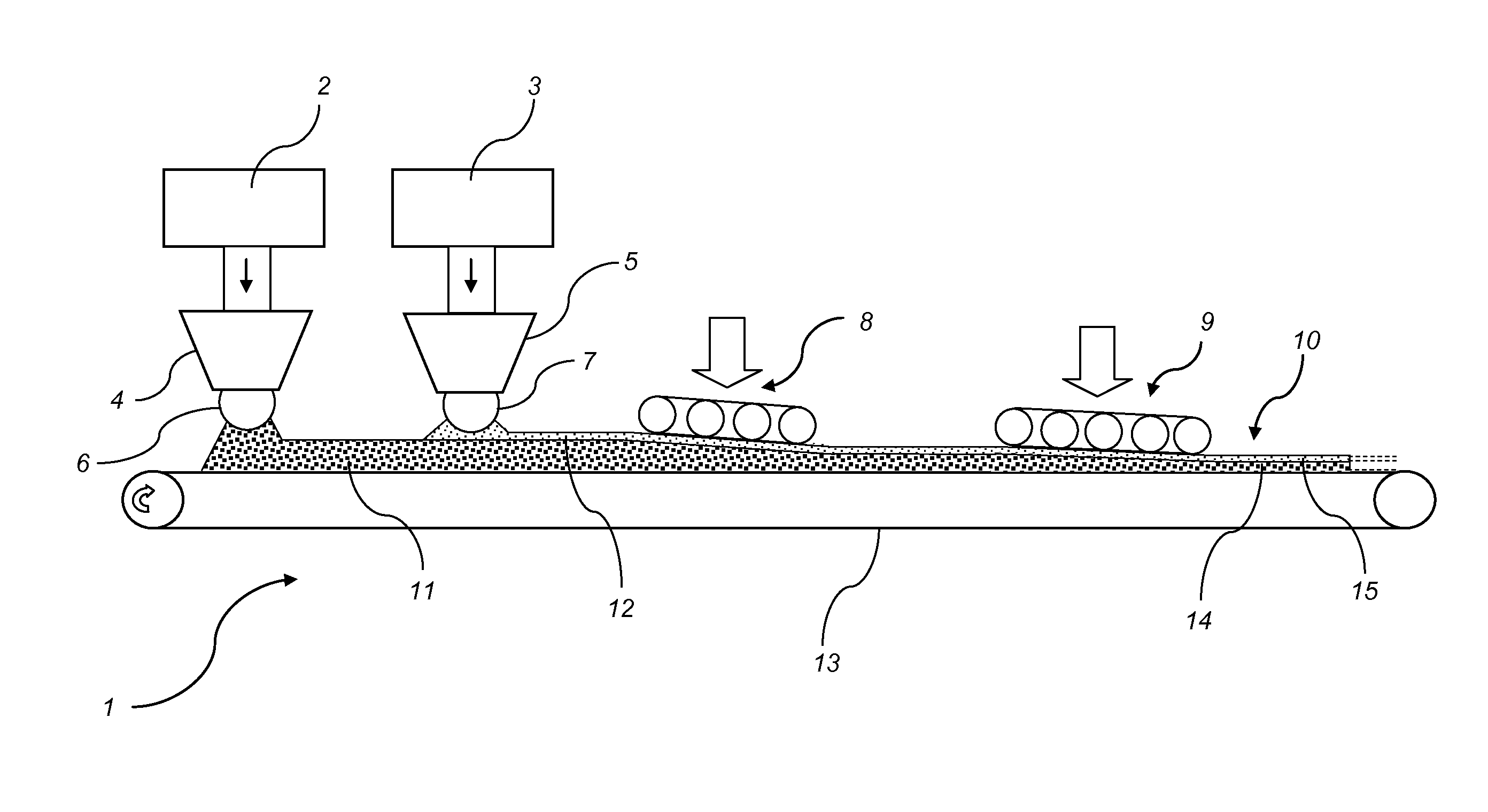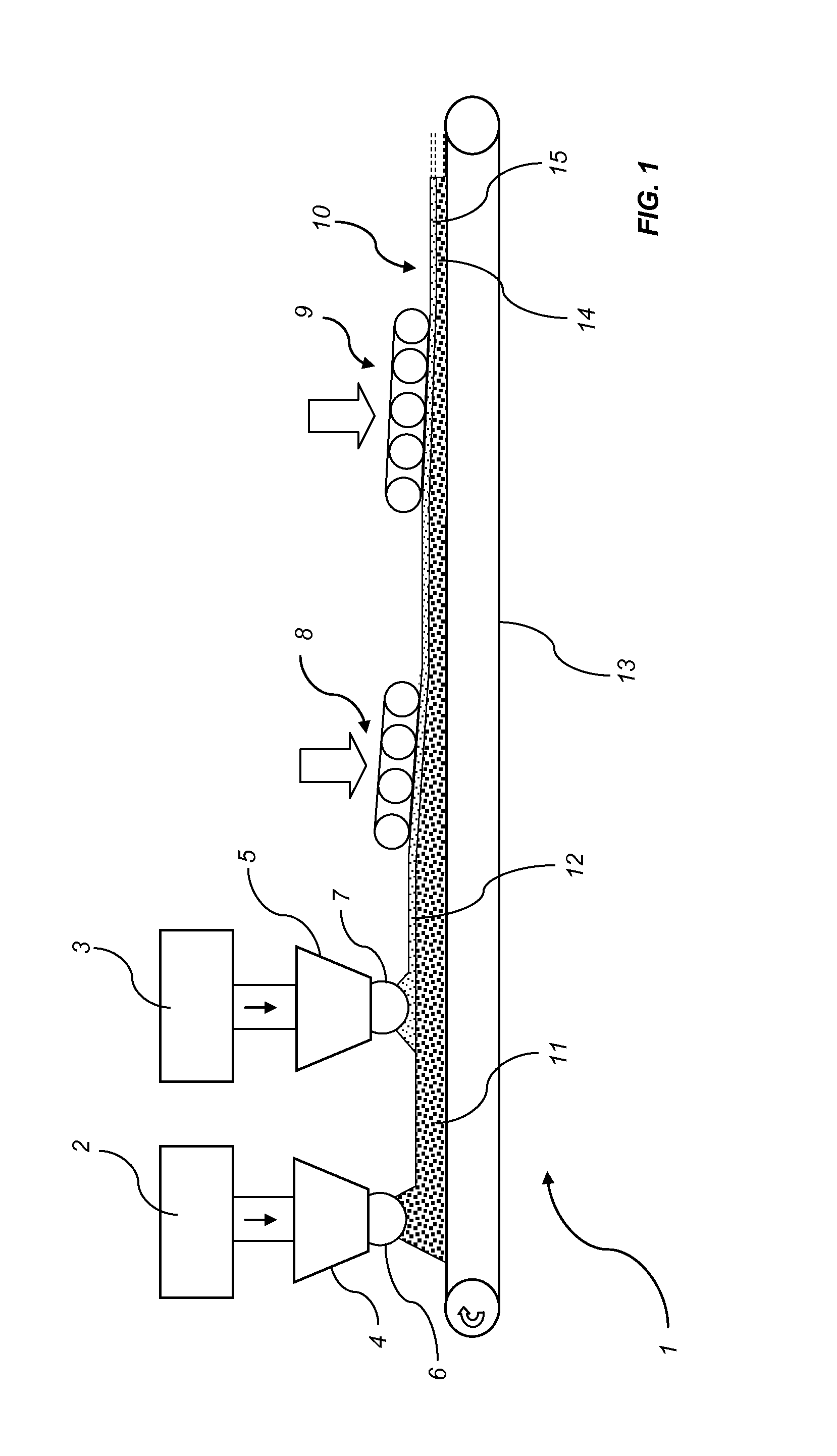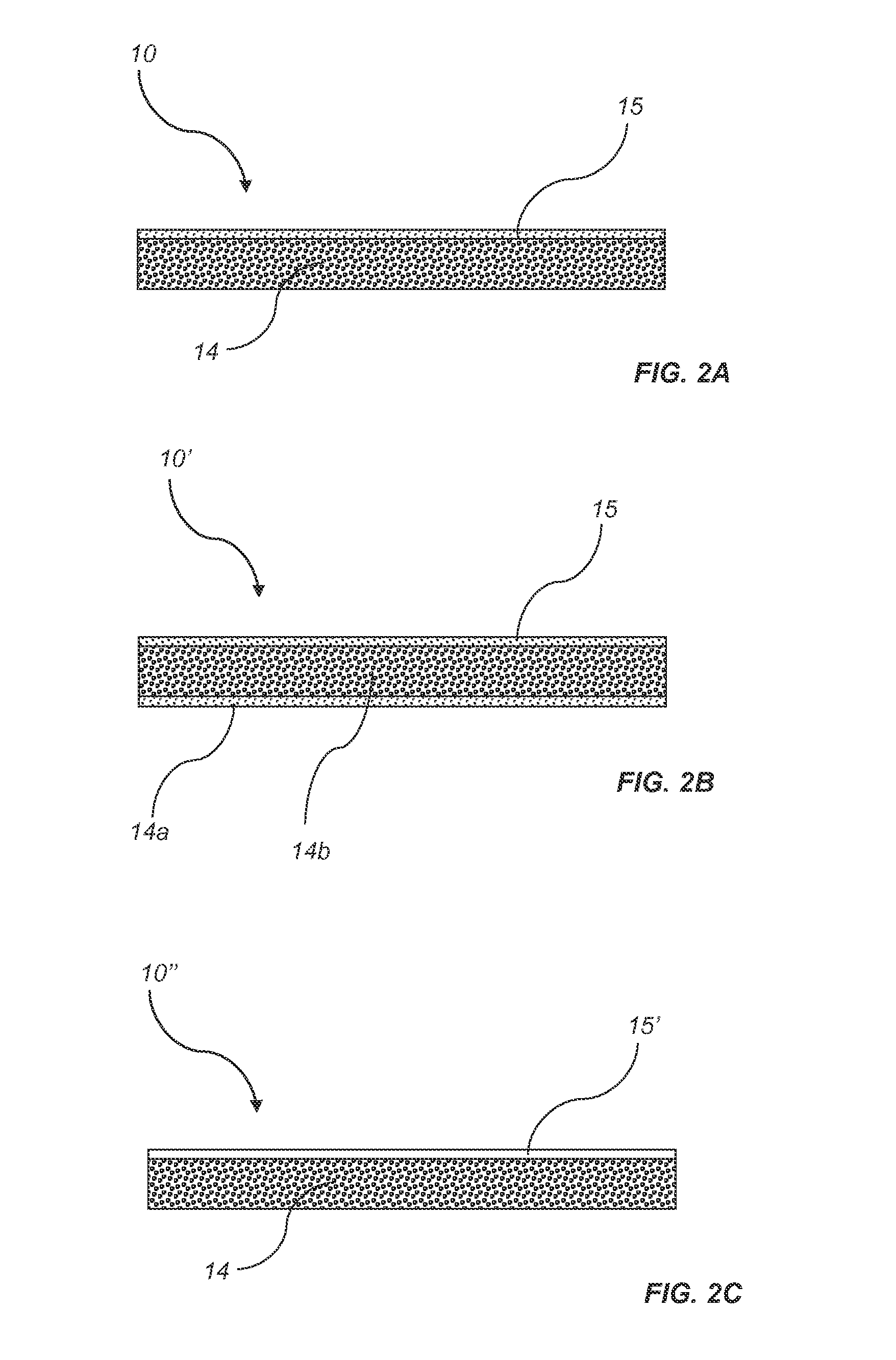Method of manufacturing a wood-based board and such a wood-based board
a manufacturing method and technology of wood-based boards, applied in the field of printing wood-based boards, can solve the problems of increasing the cost of décor, difficult to print paler colours than the colour of hdf or mdf, and difficult to print pale décor, etc., and achieve the effect of white surfaces and low cos
- Summary
- Abstract
- Description
- Claims
- Application Information
AI Technical Summary
Benefits of technology
Problems solved by technology
Method used
Image
Examples
example 1
[0101]Three different blends have been prepared. 750 g of a lower base layer comprising wood flour (200-600 μm) and 15% melamine-formaldehyde resin was scattered on a carrier to form a first layer of a first fibre mat. 2250 g of an upper base layer comprising wood particles (2 cm in length, 0.5 cm in width) and 12% melamine-formaldehyde resin, was scattered on the first layer of the first fibre mat to form a second layer of the first fibre mat. Another 750 g of a white surface layer comprising cellulosic fibres (150 μm) and 15% melamine-formaldehyde resin, was scattered on top of the second layer of the first fibre mat to form a second fibre mat. The first fibre mat and the second fibre mat were prepressed cold and moved into a hot press, pressing with 180° C. in 135 seconds at 10 bar. The product was a 900×700×8 mm particle board with a density of about 750 kg / m3 and a printable white surface layer.
example 2
[0102]A particle board in the dimension of 200×120×9 mm (density 900 kg / m3) was formed by 41 g lower base layer, 120 g upper base layer and 41 g white surface layer. The lower base layer comprises wood flour (200-600 μm), 4% hydrophobing agent, 15% melamine-formaldehyde resin and 2% hardener (calculated on the amount of resin). The upper base layer comprises wood particles (2 cm in length, 0.5 cm in width), 4% hydrophobing agent, 12% melamine-formaldehyde resin and 2% hardener (calculated on the amount of resin). The white surface layer comprises cellulosic particles (150 μm), 4% hydrophobing agent, 15% melamine-formaldehyde resin and 2% hardener (calculated on the amount of resin). The layers have been scattered on a carrier to a first fibre mat and a second fibre mat, prepressed cold and moved into a hot press. The first and the second fibre mats were pressed in 180° C. for 100 seconds in an initial pressure of 40 bar for 5 seconds, a pressure of 5 bar during 85 seconds and finall...
PUM
| Property | Measurement | Unit |
|---|---|---|
| width | aaaaa | aaaaa |
| length | aaaaa | aaaaa |
| width | aaaaa | aaaaa |
Abstract
Description
Claims
Application Information
 Login to View More
Login to View More - R&D
- Intellectual Property
- Life Sciences
- Materials
- Tech Scout
- Unparalleled Data Quality
- Higher Quality Content
- 60% Fewer Hallucinations
Browse by: Latest US Patents, China's latest patents, Technical Efficacy Thesaurus, Application Domain, Technology Topic, Popular Technical Reports.
© 2025 PatSnap. All rights reserved.Legal|Privacy policy|Modern Slavery Act Transparency Statement|Sitemap|About US| Contact US: help@patsnap.com



